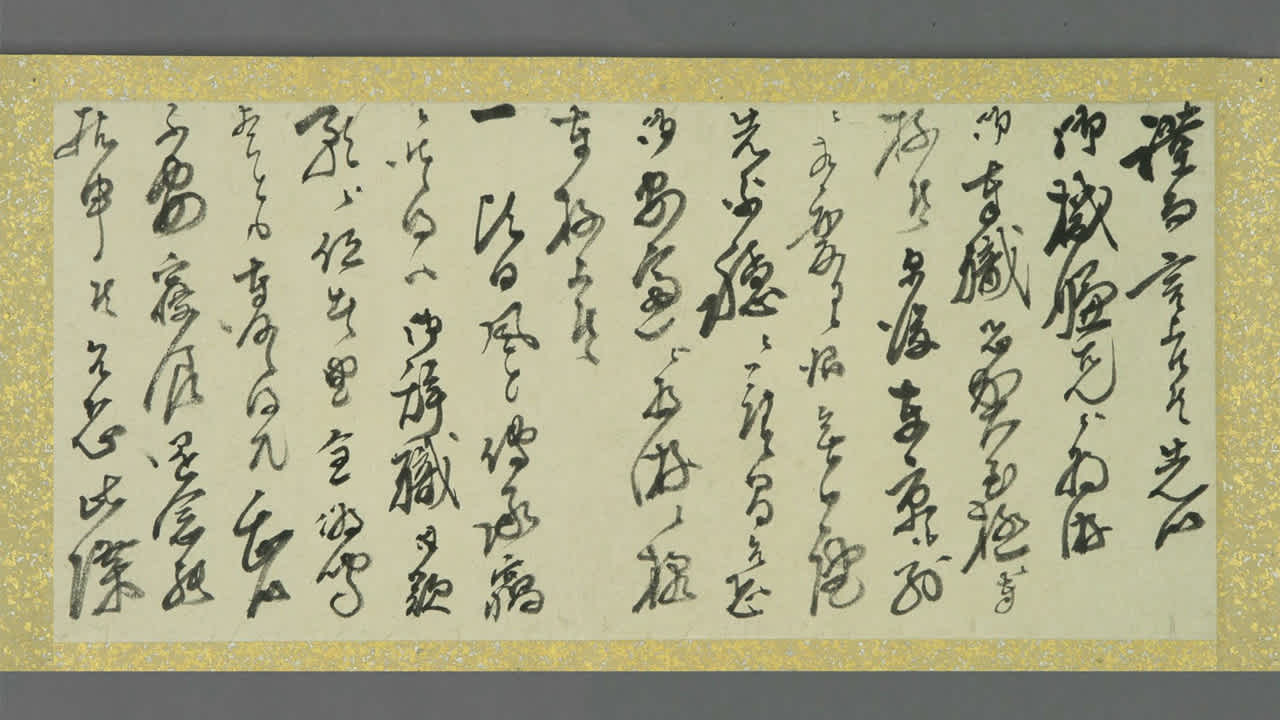Article
Brushstrokes: How to Read the Brushwork in Calligraphy

When I was living in Japan, I never understood what my fellow countrymen saw in calligraphy. What did they read in this art form made of nothing but paper and ink, and how did they enjoy it? In order to unlock this secret, I undertook some in depth research.

I’ll make this very clear to start with: Japanese people don’t read calligraphy characters because they can’t read everything. There are more than 50,000 characters in Japan and people can’t read everything. Plus there are many different writing forms of characters, and, of course, characters are handwriting. Can you read everything your colleagues write down?
So they can’t understand the contents of calligraphy, but many people visit calligraphy exhibitions simply because they enjoy it. People can retrace from the strokes how they were drawn by the calligrapher. In this process Japanese people enjoy calligraphy like a classical music concert, for example. The process of retracing characters is like listening to music; you can actively sink into the characters and make your own interpretation, enjoying the works differently every time.

When I did a Brainfood talk at Edenspiekermann, I introduced the importance of calligraphy in Japan and detailed the different strokes of calligraphy. But the fact I really wanted to share was the importance of the analysis: if you can retrace something made by another person, you can see how they made it and you can also imagine why he did it in this way. Through this investigation you can discover possible advantages or disadvantages to the processes—the most important thing when you’re creating something new.
The original meaning of “learning” in China and Japan is imitating. If you imitate something, at first you have to analyze how it was made. After this analysis you can try to create an imitation. But in the process of the creation you’ll notice that you can’t copy everything very well, and have to find other techniques or methods. If you finally find the technique used in the original, then you’ve already learned several other methods which you can use for other projects.
Asian people are therefore learning something in the process of mimicry of western products today. Old painting masters of the European medieval times copied paintings in exactly the same way to learn how other painters had created them, retracing the steps and ucovering the techniques of their predecessors, so not only Asian people, but European people use this same method.

If you know some techniques or methods from books, you often can’t put this knowledge into practice, but if you’ve learnt these things practically then you can easily pull open your drawer of knowledge and adapt it to reality. This is the very Japanese way of thinking. I wanted to share this idea, because the calligraphers always do this stuff and don’t trust the knowledge in books. They believe in practice only. Of course, this kind of thinking has advantages and disadvantages, but calligraphers are still learning from ancient calligraphy works which were made over a thousand years ago.
See the full presentation here.